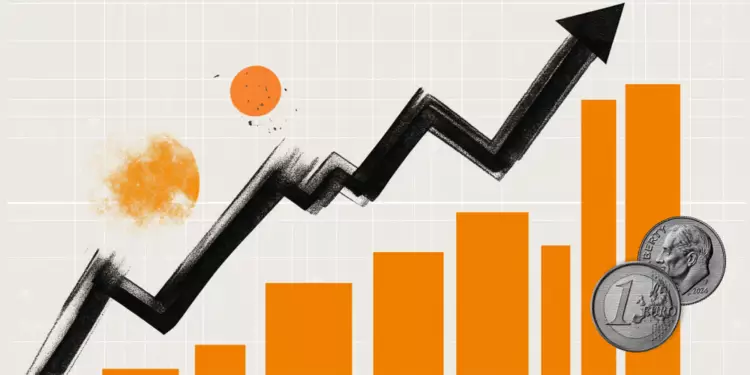In a battle for supremacy in the currency exchange arena, the EUR/USD pair has displayed significant fluctuations recently. After reaching an intraday peak of 1.1425, the euro surrendered much of its early gains, settling around 1.1375 during Monday’s European trading sessions. This rollercoaster reflects the broader dynamics at play, where the US Dollar (USD) has been regaining lost ground—an indication of ongoing uncertainties surrounding US economic policy and global trade relations.
The backdrop for these fluctuations includes President Trump’s unpredictable tariff announcements, which have raised critical questions regarding the conventional wisdom of the USD as a safe-haven currency. This uncertainty stems from Trump’s oscillating stance on tariffs against the European Union (EU), where one day he announces a 50% tariff threat, only to suspend it days later as negotiations unfold. Such volatility has put the credibility of the dollar on shaky ground, leaving investors to question the stability of one of the world’s major currencies.
Germany’s Economic Resilience and Its Impact on the Euro
Turning to the Euro’s appeal, recent data from Germany has injected some optimism into the European currency. Revised estimates indicate that the German economy grew by a robust 0.4% in the first quarter of the year, up from earlier estimates of only 0.2%. This positive news has assuaged fears of a potential economic contraction, especially following two turbulent years of downturn. Analysts at Deutsche Bank are cautiously optimistic, suggesting that the German economy demonstrates enough momentum to stave off stagnation in 2023.
Beyond just a numbers game, these developments have wider implications for the Euro. The reassurance of economic stability within the Eurozone, partnered with the perception of the Euro as the most liquid alternative to the USD, fuels its attractiveness. Furthermore, the hope for fruitful US-EU trade negotiations looms over the market, serving as a cushion for the Euro against negative impacts from USD volatility.
The Federal Reserve’s Dilemma: Navigating Economic Waters
While the Euro exhibits newfound strength, the USD faces internal challenges, especially concerning Federal Reserve policies. Speculation regarding rate cuts continues to dominate discussions, and market participants are increasingly anticipating a reduction in interest rates to stimulate a sluggish economy. With the USD potentially losing some of its previous allure as a safe haven, deliberations around the Fed’s approach to monetary policy become crucial.
Comments from ECB officials demonstrate a growing confidence in achieving inflation targets, heightening the expectations for a potential rate cut in June. Governors, like Yannis Stournaras from Greece’s central bank, have indicated a willingness to accommodate market sentiments surrounding further dovish strategies, signaling a notable shift in the European monetary landscape. As such, upcoming data releases from both sides of the Atlantic—like the US Personal Consumption Expenditure Price Index and the Harmonized Index of Consumer Prices in Europe—will significantly impact traders’ actions, disclosing the next steps in monetary policy.
Broader Indicators and Market Sentiment
Market sentiment toward the USD has taken a hit, owing to various political dependability issues—namely Trump’s antics regarding tariffs and his threats toward Federal Reserve leadership. As these factors continue influencing market perceptions, the Euro flips the script, benefitting from its reputation as a dependable alternative currency. While the pair started this week near nearly a month’s high of 1.1420, technical indicators—such as the 20-day Exponential Moving Average and the Relative Strength Index—show bullish signals. The euro’s momentum is evident, but the overarching question remains: can it sustain this trajectory?
Traders remain cautiously optimistic. Resistance levels, particularly the April high of 1.1475, will be paramount in determining the future directions of the EUR/USD pair, while the USD’s battle to maintain footing will become increasingly dependent on clarity in its monetary policy and trade relations.
While the Euro enjoys a brief moment in the spotlight bolstered by positive economic data from Germany, the USD grapples with considerable challenges. The ongoing developments in the trade negotiations, fluctuating investor sentiment, and monetary policy outlook will shape the future interplays of these major currencies. The overarching dynamic exemplifies how intertwined global economic interactions can manifest on the currency exchange stage, highlighting the ever-fluctuating landscape of international finance.

